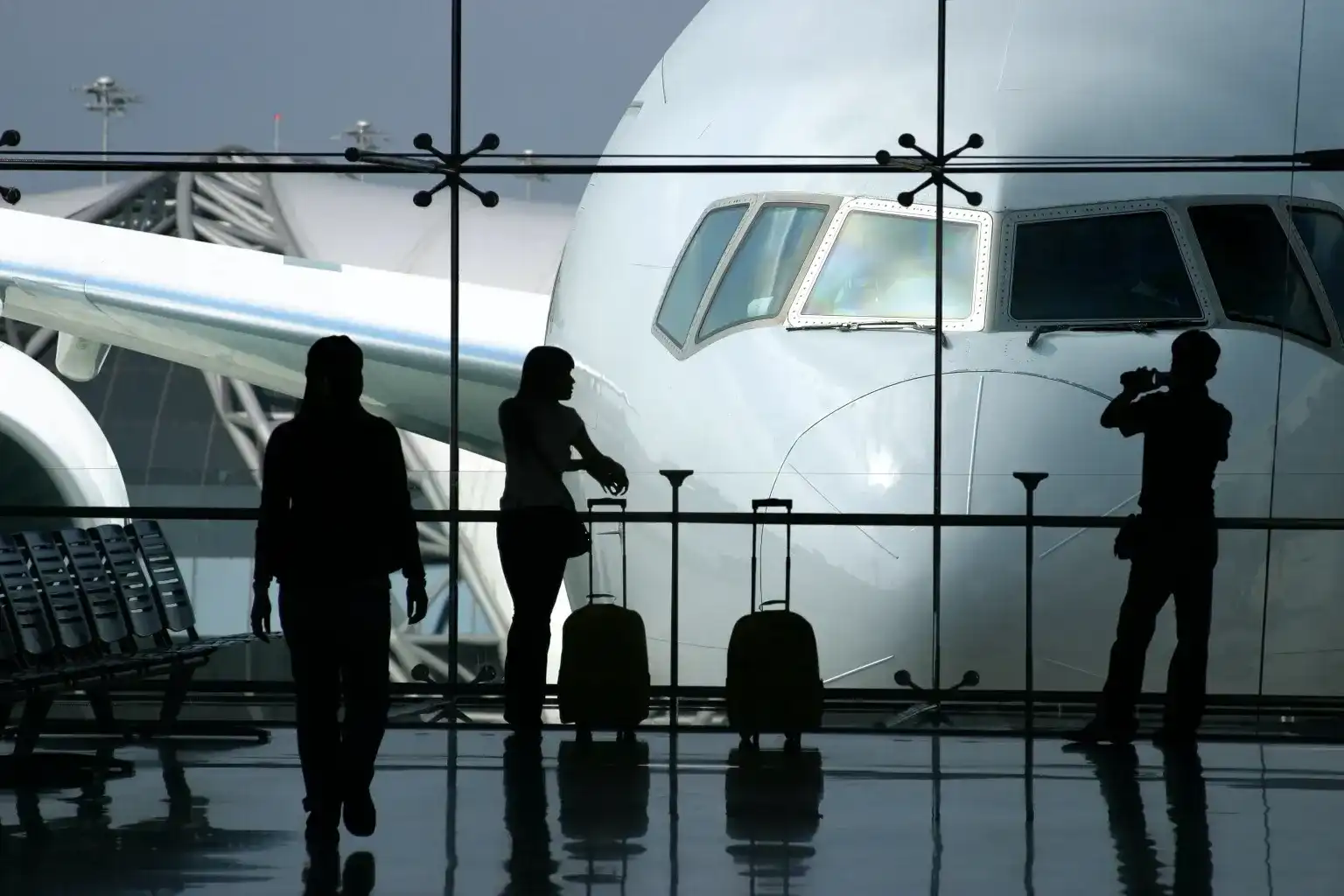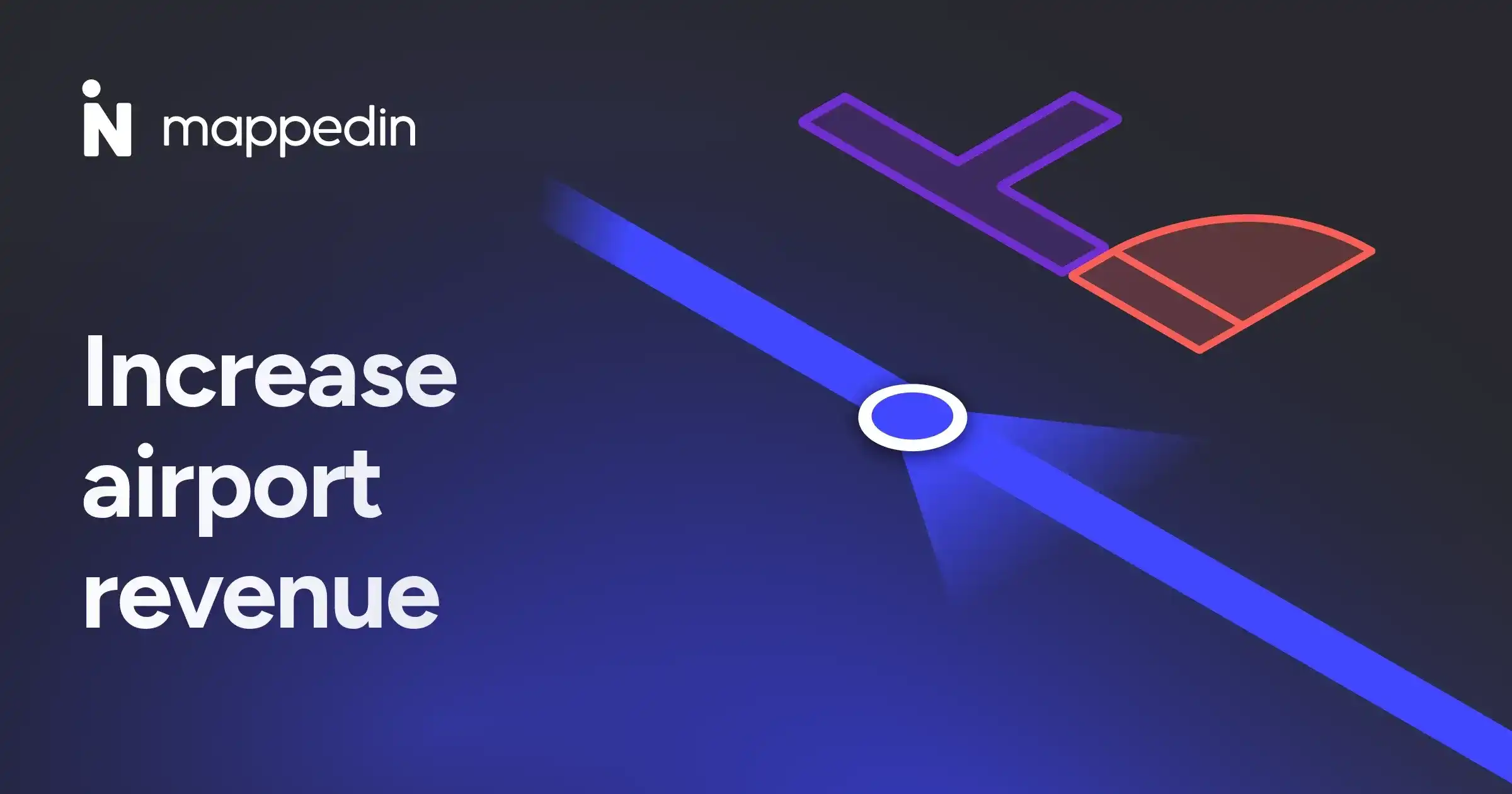Start Here
Aviation asset management systems simplify airport operations by providing real-time tracking of inventory, equipment, personnel, and vehicles through automated software that enables end-to-end visibility, prevents asset loss, and improves operational efficiency. Integration with indoor mapping platforms like Mappedin provides visual representation of asset locations, enabling staff and management to quickly locate equipment, optimize routes, enhance security monitoring, and make data-driven decisions for improved airport management.
With an asset tracking solution, tracking aviation assets and improving airport operations is not only simple, but effective. Airports can leverage this technology to generate real-time reports, improve efficiencies, and ultimately create better travel experiences.
Aviation & airport asset tracking solutions
Asset tracking solutions enable airports to monitor important physical assets such as inventory, machinery, devices, and personnel. Paired with indoor positioning and digital mapping tools, facility managers are equipped with an accurate visual representation of assets in the airport in real-time.

Tracking aviation assets in airports with asset tracking system
With a visual understanding of how assets are distributed in an airport, staff and managers can quickly navigate to them, monitor their real-time movement, assess their performance, and make data-driven decisions. For instance, assets that haven’t been used in a long period of time can be moved to more optimal locations, and employees can track equipment usage to gauge the required maintenance of each item.
How automated asset tracking can help airports function more efficiently
As airports manage large numbers of inventory, automated asset management systems can go a long way in improving airport efficiencies. With a thorough record of the location, movement, condition, and ownership of an asset at any given time, airport staff can maintain end-to-end visibility and save valuable time in day-to-day operations.
The importance of using real-time aviation tracking
Airports are complex and busy venues, making it easy to lose track of assets. In fact, employees are constantly maneuvering to various airport zones to hunt down equipment. With aviation tracking, airport personnel can view real-time tracking updates of inventory, employees, and equipment from a mobile device to quickly locate items and prevent them from getting lost or stolen.

How real-time tracking can improve the key areas of an airport
Airports can benefit from real-time asset tracking to improve operational efficiency, increase passenger satisfaction, enhance security, generate detailed reports, and prolong asset life cycles. Let’s explore these in further detail.
1. Operations
Asset management helps airports optimize operations by equipping them with quick access to data such as inventory levels, equipment condition and usage, the location history of assets, maintenance and repair issues, asset life cycles, and more. With an accurate view of assets and their performance in an airport, management can allocate resources accordingly, avoid misplacement, and reduce expenditure costs.
2. Passenger experience
When an airport is functioning seamlessly, passengers inevitably have better travel experiences. Airport staff can use real-time asset management to avoid delays and disruptions in passenger journeys. Employees can monitor equipment and ensure that baggage trolleys, ramp leaders, and wheelchairs are available for travellers at peak times. Facility managers can also gain insights into the spatial layout of items and relocate critical assets to better serve passengers.

3. Security
With a real-time birds-eye view of people and assets in an airport, airports can allocate security personnel to ensure all areas are covered. While ensuring the safety of passengers, coordinating security can also prevent airport items from getting stolen. With a visual representation of all assets, security will immediately notice discrepancies and can react promptly.
4. Compliance with reports and audits
Aviation tracking software generates real-time asset reports, including detailed information on inventory levels, damages, asset failures and more. With this technology, asset auditing is simplified and ensures maximum accountability and accuracy of asset location, loss, and management. Maintenance staff can also ensure that equipment is serviced in line with compliance regulations and asset performance standards.
5. Prolonging asset life
An airport asset management system also provides full transparency in regards to asset ‘health’ - including their performance, utilization, and life cycle. Assets across airports all perform well at their peak, but after continuous usage and repair, wear and tear will inevitably ensue. Airports can track this through the system, and determine how much longer an asset can be used. They can also determine whether asset maintenance costs would be greater than the replacement costs.
Types of aviation assets that need tracking
A range of physical assets can be tracked to provide insights and improve airport operation. Airport vehicles, unit load devices, ground support equipment, cargo, mobile assets, de-icing vehicles, and security personnel are all valuable assets to track. Employees can also monitor equipment such as baggage trolleys, ramp leaders, pallet dollies, and wheelchairs.
Cargo handling optimization
Another use case for airport tracking and location systems in the aviation industry is improving baggage handling systems such as cargo handling. Airports transport cargo regularly, and to ensure that everything is boarded on time for departure, it can be tracked in real-time using this convenient software. The movement of cargo can also be analyzed to identify faster routes and eliminate delays.

Personnel safety and tracking
With a real-time view of personnel in the airport, management can ensure the safety of staff at all times. Fire extinguishers, defibrillators and other safety equipment can be tracked and located on the map to prepare for emergencies. Employees can also gain an awareness of damaged and dangerous equipment that they must avoid using.
Why use MappedIn?
To efficiently track aviation assets, airports must understand where inventory, equipment, and items are stored. Indoor maps provide an accurate visual representation of location data collected by asset tracking software, and can be updated as airport floor plans change.
Mappedin is the leading provider for creating, maintaining, and visualizing property maps. Our Map Editor acts as a centralized management tool for our clients to edit their venue maps and maintain the most up-to-date location information while Mappedin Venue Format (MVF) provides clients with geometry and location data associated with their venue and is directly connected to the Mappedin CMS. MVF can be used to build 2D mapping experiences or converted with a variety of 3D renderers, including Mappedin’s.
Airport asset tracking FAQs
What are asset tracking systems?
An asset tracking system enables airports to keep track of various assets, IT devices, equipment, and items from one central location. This software helps airports easily monitor their aviation assets and update them when they need maintenance or replacement.
What Is the best way to monitor aviation assets?
The best way to monitor aviation assets is through an asset tracking platform. Asset tracking systems are a lot more efficient than relying on hard copies of paper or manual spreadsheets. With a detailed record of their movement and real-time location, owners and operators can track, plan, and manage assets in a seamless way.
How can businesses keep track of fixed assets?
The airport asset tracking market is growing. Understanding daily operations, asset strategies, asset costs, asset inventory, asset performance, and other daily asset tracking operations can help with overall airport planning processes. Learn more Airports as an industry, or about asset tracking done right with proactive management and location intelligence here, and contact us to learn more.
Share




